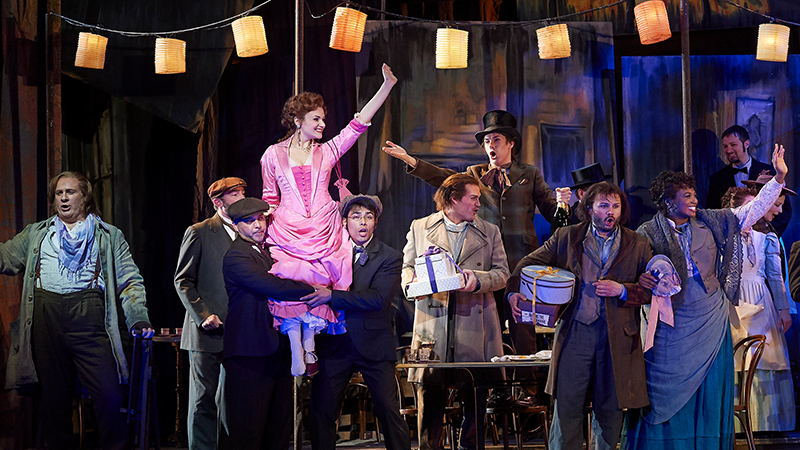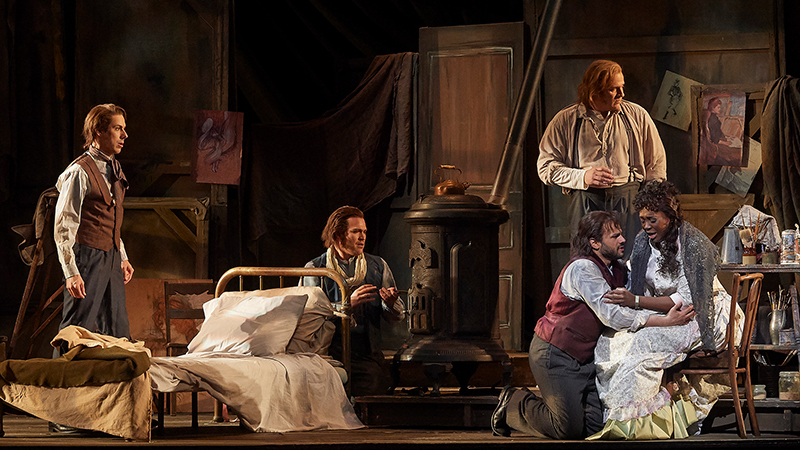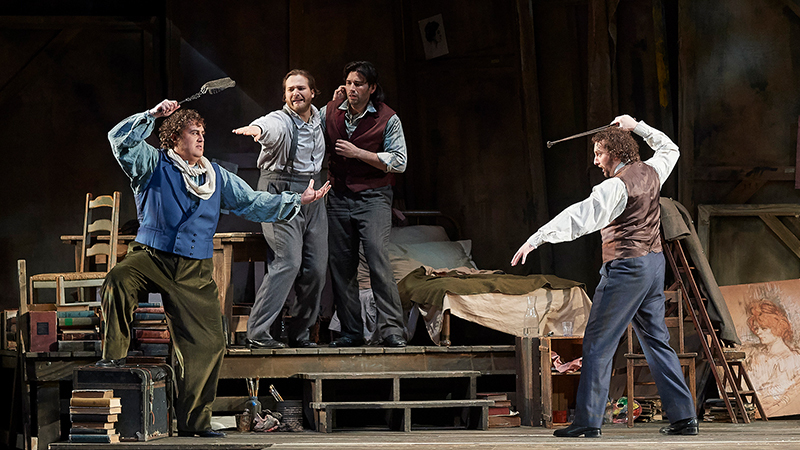-
10 Things to Know about LA BOHÈME
By COC StaffPosted in 23/24 Season
Puccini’s heartrending opera about a group of struggling Parisian artists is one of the most performed operas worldwide, beloved for its recognizable melodies, lush orchestration, and tragic romanticism. But it wasn’t a success from the start...
Read on to learn 10 things to know about La Bohème before joining us at the opera!
Spoiler alert: the following content contains plot points that some audience members may not wish to know in advance!
BUY TICKETS
In a nutshellLa Bohème follows the loves and losses of two impoverished couples living in 19th-century Paris: the poet Rodolfo and his seamstress neighbour Mimì, and his painter friend Marcello and the singer Musetta. Plagued by jealousy and illness, their love is severely tested by the harsh realities of poverty—exposing the price exacted by living for their art.An unpromising beginning
The opera was far from a great success when it premiered in 1896 in Turin. Yet despite an underwhelming response from audiences and divided critical reviews, La Bohème quickly gained in popularity: by 1903 the Opéra-Comique had already presented it a hundred times, and it has since become one of the most loved and frequently performed operas worldwide.Two Bohèmes
Puccini based La Bohème on Henry Murger's Scènes de la vie de Bohème, a novel romanticizing the lives of artists living in the Latin Quarter. The book was in turn adapted into a stage play by Théodore Barrière, which inspired several opera librettos. When he heard about Puccini’s Bohème, composer Ruggero Leoncavallo publicly announced that he had previously offered Puccini a completed libretto for the opera, thereby claiming precedence. Puccini responded to the accusation in an open letter, writing “Let him compose. I will compose. The audience will decide.” (Leoncavallo’s La Bohème enjoyed a successful premiere in Venice in 1897, before promptly disappearing from the public consciousness).
The artist as outsider
The story is set in Paris circa 1830—a moment when, in the aftermath of revolution and war, French artists found themselves adrift without the historic support of the aristocracy and church. The characters of La Bohème quickly came to represent a generation of creative and economic misfits, disconnected from the rest of society by circumstances and choice, contributing to an idea of the artist as outsider which endures to this day.

That’s staying powerConductor Arturo Toscanini was just 28 at the world premiere of La Bohème, and fifty years later—in 1946—he conducted a commemorative radio performance that was later released on vinyl record, tape, and CD. This would be the only recording ever made of a Puccini opera featuring its original conductor.
A verismo operaLa Bohème is a popular example of verismo opera. Emerging in the late 19th century, this style was characterised by a focus on realism and naturalism, showing everyday people in recognizable situations, spurred to act by passionate emotions. Tosca and Madama Butterfly are two other Puccini operas that fall into the verismo tradition.
Musical highlightsThe music of La Bohème includes some of the most famous arias ever composed, such as “Che gelida manina” (“Your tiny hand is frozen”) and “Sì, mi chiamano Mimì” (“Yes, they call me Mimì”). Many of Puccini’s beautifully lyrical melodies are structured to include small intervals between the notes, rather than the dramatic leaps of earlier operas—part of the composer’s attempt to reflect what he called “the small people” and their everyday lives.

Musical descendantsPuccini’s opera later inspired a number of other well-known musical works, from Bobby Worth’s 1959 pop song “Don’t You Know?” (which reimagines "Musetta’s Waltz" from La Bohème), to jazz pianist Dave Burrell’s 1969 recording La Vie de Bohème, to Jonathan Larson’s 1996 musical Rent.
Paris, je t’aime
Our signature COC production of La Bohème features a set designed of shifting painted canvases in an evocative nod to the Romantic artists at its heart. Under the direction of Tony Award-winner John Caird, whose production of the original Les Misérables has since played all over the world, an underdog’s Paris is once again brought to life in all of its gritty glory.
Life imitates art
Real-life married couple, tenor Pene Pati and soprano Amina Edris, will star this fall as the show’s tragic lovers. This will be the first time that they sing these roles together!
Don’t miss out on this classic favourite: join us for the most romantic opera of the season!
La Bohème opens October 6 at the Four Seasons Centre for the Performing Arts!
BUY TICKETS
Photos: Michael Cooper
